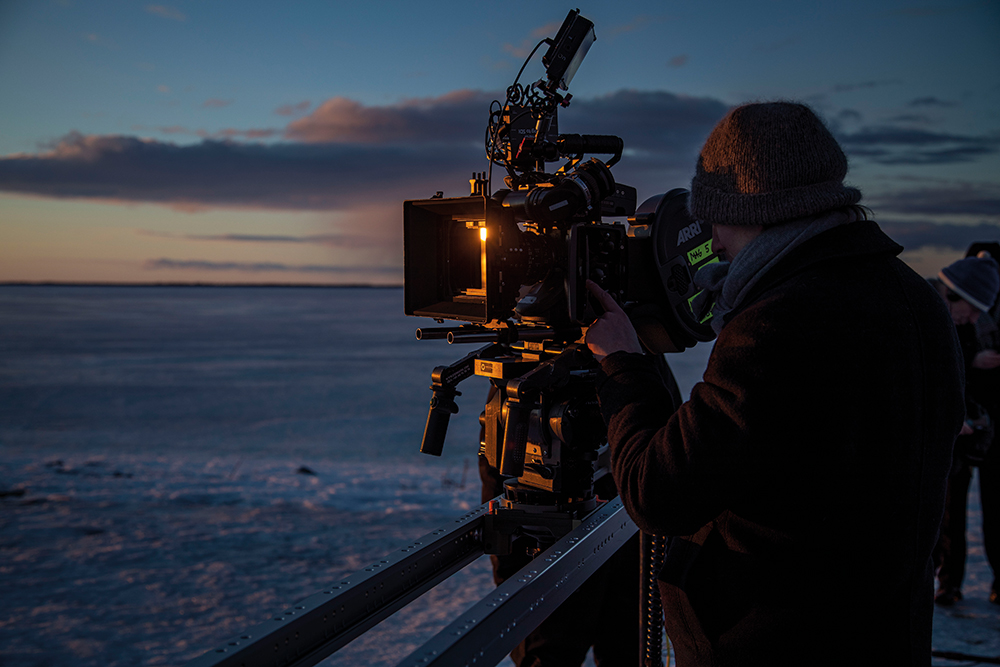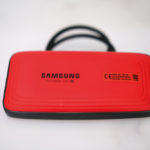
Commercials in celluloid
Posted on Nov 1, 2019 by Alex Fice
Film has always been a favourite medium for commercials. With help from a new film lab, its future use is assured
Words Chelsea Fearnley / Pictures Philips
Old-style filmography has risen from the (virtually) dead. Large numbers of filmmakers – professionals and amateurs alike – are turning their backs on digital capture in favour of the art of the craft, where images are conjured by exposing gelatine-coated strips to the light – a process that seems distant and exotic
by comparison.
It’s therefore no surprise that around the turn of the millennium, digital took the lead with its cost-cutting workflows that effortlessly connected capture with both post and distribution. But it’s going to take more than a digital revolution to reduce a century-old technology to desuetude. And what’s interesting is that this resurgence in film isn’t restricted to the silver screen; the number of commercials being shot on film has grown exponentially over the last few years.
Perhaps it’s because it’s a good gateway for filmmakers due the short-form nature of this type of content. Then again, is it absolutely true that time is of the essence when shooting on film?
Producer and celluloid enthusiast Ben Link says: “Of course, there isn’t a limitless take ability on film. Time is concentrated on getting the shot right the first time. It’s about discipline and rehearsing the scene, which is understandably easier to do when you’re creating something that is only going to be a couple of minutes long. If you’re new to film, commercials are a great way to get into it, but that shouldn’t deter you from choosing to shoot on film for something that’s going to be feature length. Film naturally forces you to focus creatively and if you’re doing that, you don’t need to worry about time spent getting additional shots. And I think that sometimes, the option of being able to do that with digital can be a big distraction.”
There’s also usually large funding and creative backing on commercials, and Link tells us “brands are always wanting to explore new technology”. He laughs: “Well, film isn’t new, it’s an old technology that is making a comeback in advertising, and brands are wanting to capitalise on it.”
In 2014, Cinelab worked on less than 20 commercials and in 2018, it worked on 320
Icy plains
Link’s most recent and award-winning commercial for Philips’ shaver division was shot on film in Finland. It features a group of men shouting – actually a Finnish performance group from called Mieskuoro Huutajat (or ‘shouting men’) that specialises in orchestrated shouting – and while the shouting seems aggressive, the words, which are translated into English subtitles, are sensitive. The campaign is themed around making a better life for men, by letting them express their feelings.

He says: “Shooting this was a bit of a labour of love. There was a lot of nervousness in terms of running out of film stock and shooting in cold temperatures in the middle of nowhere. And we did actually end up in a situation where we were left with two rolls, so we could have run out of stock. Thankfully, we didn’t, but I did have to cough up some extra cash to get the stocks back to London. We were shooting in a remote location and I wanted to drive to Helsinki, where there was a reputable airport, in order to get the film stocks back to the lab safely. But in terms of shooting, I find that using film is cheaper; the cameras cost less, and you don’t need a DIT.”
The lab securely holding the Philips commercial is Cinelab London. It’s also the only film lab in Europe complete for providing a one-stop shop solution for film, from acquisition to delivery. It was founded in 2013 by industry veterans Adrian Bull and John Mahtani and was established at a time when digital acquisition had become custom and film labs faced extinction. Nonetheless, opening this facility was unquestionably a risk worth taking. In 2014, Cinelab London worked on less than 20 commercials and in 2018, it worked on 320. To date, that figure has risen to over 430 and includes high-end fashion brands, such as Gucci, Stella McCartney and Chanel, as well as well-known tech brands, such as Apple, Google and Samsung.

Colourist Simona Cristea is also acquainted with Cinelab London through her connections with Technicolor: two companies that have partnered together to combine Cinelab London’s film scanning and processing services with Technicolor’s digital solutions. She says: “It’s great that the lab still exists and is becoming busier year on year,, because if you think back to ten years ago, film was on its way out. But it’s thriving again, and I can tell you this not only because I work on more commercials, that were shot on film, but because I can physically see that more video content is being shot on film. It’s through the details in the skin tones and in the highlights and shadows.”
 A shaving brand employs a performance group from Finland to convey its sensitive side
A shaving brand employs a performance group from Finland to convey its sensitive side
Cristea says she understands that sometimes DOPs may choose to shoot digital over film because of concerns such as they’ll be shooting night scenes and digital can capture more information. “Obviously, I’m not a DOP and I’m sure they know what they’re doing, but with film, you can choose the right stock and get a beautiful image. If you’re shooting a night scene, all you need is a stock with a higher ISO.”
Film is all about interpretation. It doesn’t need to be super sharp or super HDR. The hyperrealism in digital cinematography is just a trend
This reminded Cristea of a quote by the famous DOP Roger Deakins, she says: “Don’t be afraid of the dark.” And continues: “Just because the information is there, in the shadows behind some character out of the window, it doesn’t mean that you need to see it. Film is all about interpretation. It doesn’t need to be super sharp or super HDR. This hyperrealism in digital cinematography is just a trend. I don’t think it’s the other way around.”
The process of grading film isn’t too dissimilar to digital, because film is digitised before it makes its way into the editing suite. But if it’s digitised, does that defeat the idea of shooting on film for the soulful image? Cristea doesn’t seem to think so: “It’s about the image captured through the lens and I think it looks better on film than it does digital. Sure, you’ve got the additional process of scanning the film and turning that file into a DPX, which is a high-range file that is sent to us on a hard drive, but if the image is better, it’s going to require less work in the grade. Also, a lot of DOPs are after the filmic look, but why not just use film to create that?”
 DOP Ben Link (middle) who shot the Philips’ commercial on film
DOP Ben Link (middle) who shot the Philips’ commercial on film
Goodbye television?
While it’s become increasingly popular for film to be used for shooting commercials, there has been a simultaneous increase in the use of OTT services as our main mode of TV viewing, and many of these services have subscription options that are sold on the benefit that there aren’t any ads. So, what happens to this rise in film for shooting commercials if we send linear TV into retirement?
Cristea says: “With the rise of subscription services, such as Netflix, we’re seeing far fewer adverts in our day-to-day TV viewing. But on the other hand, people are on average spending more time looking at screens and using free services where they’re exposed to ads. Various research seems to suggest that people don’t necessarily mind seeing ads, but what they really object to is bad advertising. This has been exemplified in recent years with the release of the John Lewis Christmas commercial, which is now a cultural event in the UK. We always strive for excellency in our industry, just as those content creators for subscription services already have by upping their production values.”

She continues: “If you’re looking to make a high-end commercial, the consideration of whether to shoot on film is going to be part of that conversation. And we’ve seen a lot of the high-end brands, especially in fashion, return to shooting their spots on film. I wouldn’t bet on the death of film in advertising quite yet.”
With online video, we’ve been plummeted into a world where differentiation in video content matters more than ever – and Link stresses that “commercials have to be entertaining”. But it also goes back to quality, and he concludes: “Film just looks beautiful. And I think some people will look at it and think it’s just a fad. But it’s not a fad, it’s a way we work, and I think it’s great that people are discovering or rediscovering it.”








